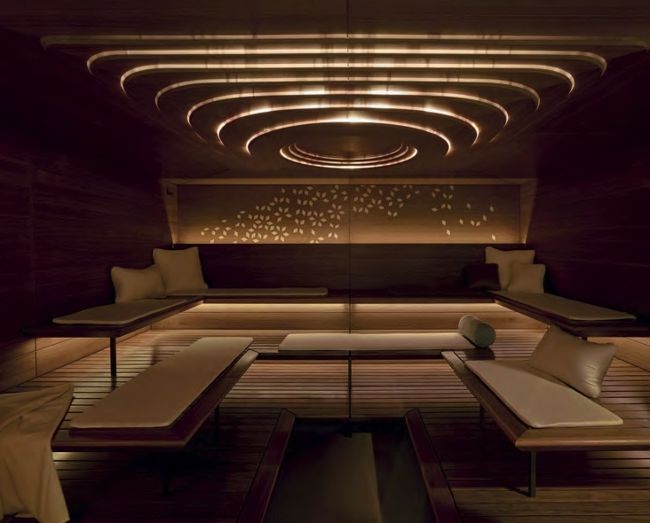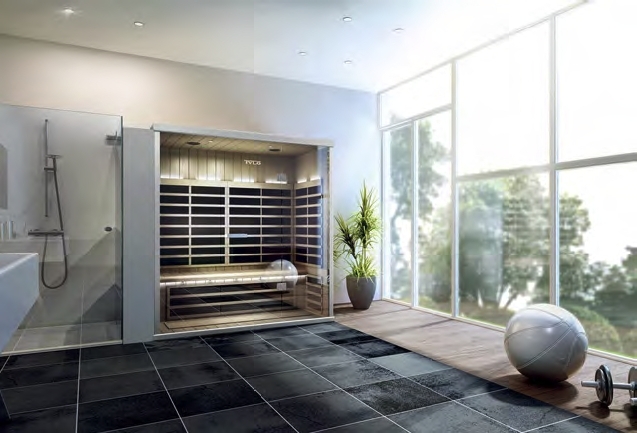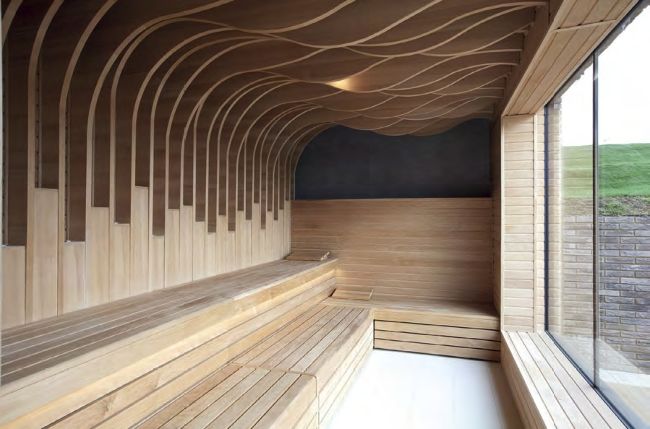Eco experience
Technological advances and growing demand for sustainable spa experiences mean it’s time to start making responsible changes to save both water and energy, discovers Georgia Seago
As the world comes together to develop vital processes to save our natural resources, spas can’t afford to ignore figures about current water waste.
According to the Sustainable Spa Association (SSA), an impartial body that launched earlier this year with an objective of guiding spas through adopting greener business practices, spa clients in the UK use on average 133 litres of water per visit, and with water-based treatments growing in popularity, this figure is only likely to increase.
SSA director Lucy Brialey says there are five main water-wasting offences that spas frequently commit – failing to have a water usage policy for staff and guests; not measuring water usage or simply being unaware of it; having free-flowing taps and showers; poor maintenance of leaks and spa equipment; and overfilling whirlpools and swimming pools.
Yet, Brialey emphasises that spas can turn the tide via small and simple changes. “The most important part of change is to start somewhere. No matter how small these steps are, you’ll find that they gradually gain momentum and become part of your vision for greater change,” she says.
Tides of change
With any water conservation project, a good place to start is with showers and toilets. “Think about installing sensor-controlled taps and shower heads because studies indicate that these fixtures can reduce water consumption by as much as 30%, as water is turned on only when needed and shuts off as soon as the user walks away,” advises Brialey. “Considering that the standard tap uses about 2.2 gallons of water per minute, cutting even seconds of running time can result in significant savings.”
Another simple change you can make in bathrooms is switching to dual-flush toilets, but make sure your staff and guests understand how to use them for water conservation. “These systems release a relatively small amount of water to flush away liquid waste and can conserve hundreds of gallons per day,” explains Brialey
A growing number of eco-conscious spas in the UK have implemented greywater or water harvesting systems, which collect used water, clean it and plumb it back into the system to be used again. There is also the option of waterreducing shower heads, suggests Erin Lee, managing director of sauna, steam and spa manufacturer Dröm UK. “Technology for showers has continued to evolve, with the inclusion of aerated nozzles to maintain pressure while reducing water usage,” she adds.
Pool maintenance is also key when it comes to sustainability and energy conservation in spa thermal areas, preventing the need to “dump” water and fill it with a fresh supply. Emanuele Sebastiani, research and development manager at Italian spa designer Starpool, says improved filtering systems are being developed to make the cleaning process less wasteful. “Legislation provides parameters for a minimum daily water replacement, basically calculated on the number of bathers, while a further quantity of water is used for washing filters,” he explains. “We foresee special glass materials for the filtering layers instead of common quartz sand, in order to reduce the consumption linked to the washing stages.”
Hotting up
There are a number of ways in which spas can develop more environmentally friendly heat experiences, looking at factors such as materials, insulation levels, lighting systems, heat recycling and intelligent control systems.
The use of natural materials like timber is a good starting point – reclaimed or recycled versions are the most sustianable.

Previous page (lead image): A Klafs Green Sauna. This page, from top to bottom: Klafs Aurora sauna, the Sparcstudio-designed chamomile herbal steam room at The Spa at South Lodge
Timber certified by the Forest Stewardship Council, an international not-for-profit organisation that sets standards for responsibly sourced forest products, is another excellent choice as it can be traced back to ensure it really is sustainable. Materials also need to be carefully checked to make sure they don’t emit high levels of volatile organic compounds (toxic substances such as formaldehyde that spa users can breathe in or absorb through their skin). “Some materials may emit harmful substances when they are heated, and there are products which are hazardous, such as glues and varnished woods,” says Sebastiani.
Be sure to ask suppliers and consultants these questions before making your choices. For example, Starpool uses mechanically fixed natural solid wood, verified and controlled by testing in specialised workshops to check for toxic substance release. Spa design consultant Sparcstudio also works only with tested natural materials and protection products for thermal areas.
Spas can reduce energy wastage by ensuring the correct amount of insulation is used in the sauna and by doubling up on the ceiling, where the heat is most intense
Responsible research
Operators should consider the ecocredentials of different sauna materials when designing the overall aesthetic of a spa, advises Lee. “Considerations can be made when designing individual rooms.
For example, large amounts of glass would result in increased heat loss, and higher ceiling levels or large, solid slabs of stone require more energy to heat up.” This is where insulation comes in, adds Lee: “Spas can reduce energy wastage by ensuring the correct amount of insulation is used and by doubling up on the ceiling, where the heat is most intense. This will help keep the heat within the sauna.”
Tom Howells, director at Sparcstudio, adds “Generally, lower-temperature saunas with higher humidity will have slightly lower running costs.” Meanwhile, steam rooms, he advises, benefit in particular from thicker insulation, which also reduces condensation from the ceiling.
The current trend for sleek, modern glass doors without frames is problematic, however. They generally only allow for single glazing, even though well-insulated walls and ceilings are imperative to keeping the heat in steam rooms and saunas.
“High-performance insulation is a must from our point of view. The benefits outweigh the costs because heat transmission, especially via the ceiling, is one of the main factors behind energy loss,” says Rolf Glantz, former head of architecture and design at thermal facilities manufacturer Klafs and general manager at Klafs subsidary Geplan Design.
Multiple choice
When it comes to the design and installation of thermal facilities, Glantz says to “think extensively about energy efficiency”. He explains: “Klafs has developed several concepts for lower energy consumption without reducing comfort for guests. For example, the Green Sauna can help spa operators cut energy usage by 35%, which allows them to protect the environment and save money at the same time.”
Infrared saunas are another eco-friendly option, as they only use energy when in use, as opposed to conventional saunas, which need to be switched on for the whole time the spa is open. However, the jury is out when it comes to the effectiveness of infrared versions compared with traditional saunas. Howells is of the opinion that, “Infrared is pleasant but only effective in smaller rooms. Hybrid rooms are possible but traditional is still the best”.

From top to bottom: A Starpool combination steam room and sauna, a Dröm infrared sauna Lee, Lee,however, believes “spas should definitely consider infrared saunas. They have different benefits to traditional saunas, making them a great addition rather than an alternative. Sebastiani is in agreement, adding, “Infrared saunas do not achieve the effect of a Finnish sauna at 90°C due to the lower temperature. Starpool has a collection of combi saunas that can work both in Finnish or infrared mode.”
Under the sun
Heat and energy sources are another area to focus on, starting with boilers, which need to be discussed at the beginning of the spa construction process to ensure the most efficient and appropriate one is chosen. Solar panels can be a good add-on, although the high temperatures required for heat experiences mean that, for most spas, panels need to become more efficient to be a truly viable option.
“Solar panels are not currently able to support the power request needed for spa environments,” says Sebastiani. “We don’t think they can be proposed for this kind of use.” Although, Lee believes it is always worth considering sustainable options wherever possible when designing a spa.
There are, however, options for energyefficient lighting that can help spas lower both their energy consumption and bills, like LED. “This smart technology enables spa operators to reduce lighting energy consumption by up to 70% compared to conventional lights,” says Glantz.

From top to bottom: The juniper infused panoramic sauna by Sparcstudio at South Lodge, Starpool smart controls for heat experiences
The use of smart lighting controls should also be a key element in any spa sustainability plan, allowing operators to control usage as efficiently as possible.
“Lighting controls should allow for a timer or daylight sensor so that the lighting can be turned off automatically when not in use or lowered in output during daylight hours,” says Peter Mitchell, spa and wellness design manager at sauna and steam room manufacturer Helo UK.
“Some lighting circuits will be required for cleaning after hours, but decorative lighting, for example, should be isolated on a circuit that can be turned off,” he adds.
“A system is only as good as its interface, so being able to adjust lighting simply from a tablet with open-access software will simplify the ongoing management of the lighting system.”
Another interesting development is water-powered lighting, whereby if a shower, for example, is being used, then a water wheel connected to a motor will turn, creating enough energy to power a light source.
With so many ways to work towards becoming a more eco-friendly spa, there’s no excuse not to make some simple changes – but it shouldn’t end there. “The objective of any programme is not only to save water and energy but to firmly instil a culture of conservation to ensure long-term, continuing improvements,” says Brialey.
“Once your programme is in place, reducing consumption will become a respected way of life in your spa for both staff and guests.” Therefore, it’s important to communicate your efforts to guests, with in-spa messages or polite notices asking for careful consideration on water and energy consumption.
Brialey continues: “Being a responsible spa is becoming increasingly important to savvy consumers, whose thoughts have turned not only to their own health and wellbeing, but to the impact on the environment around them.” PB